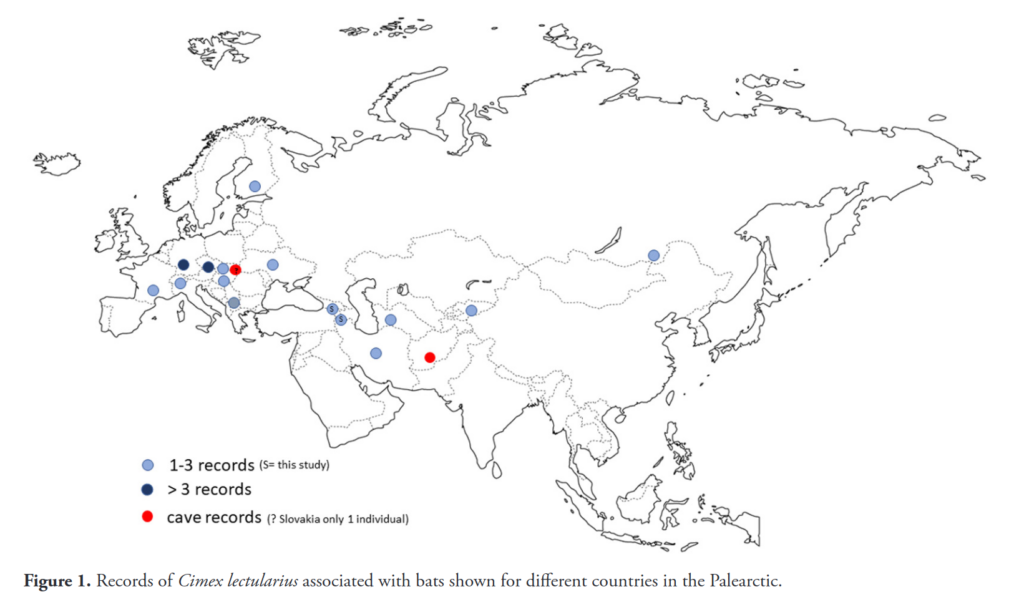
Besides humans, the common bed bug Cimex lectularius uses bats as hosts, but no such records were available from the Southern Caucasus. Here, we record the greater horseshoe bat (Rhinolophus ferrumequinum) and the lesser mouse-eared bat (Myotis blythii) as hosts of C. lectularius from two Georgian and one Armenian sites. A summary of all known published records of bat-associated populations of C. lectularius shows they are both scattered and restricted to the Palearctic only. Observations of C. lectularius from bat colonies in Georgia and Armenia were made in old buildings or ruins, like churches or monasteries, but not in caves, despite a specific search. This supports previous studies suggesting that 1) bat-associations of common bed bugs are very rare outside Central Europe and 2) almost never occur in caves. We discuss climatic conditions and host preferences as possible factors for these findings and the implications for the origin of the human bed bug interaction.
